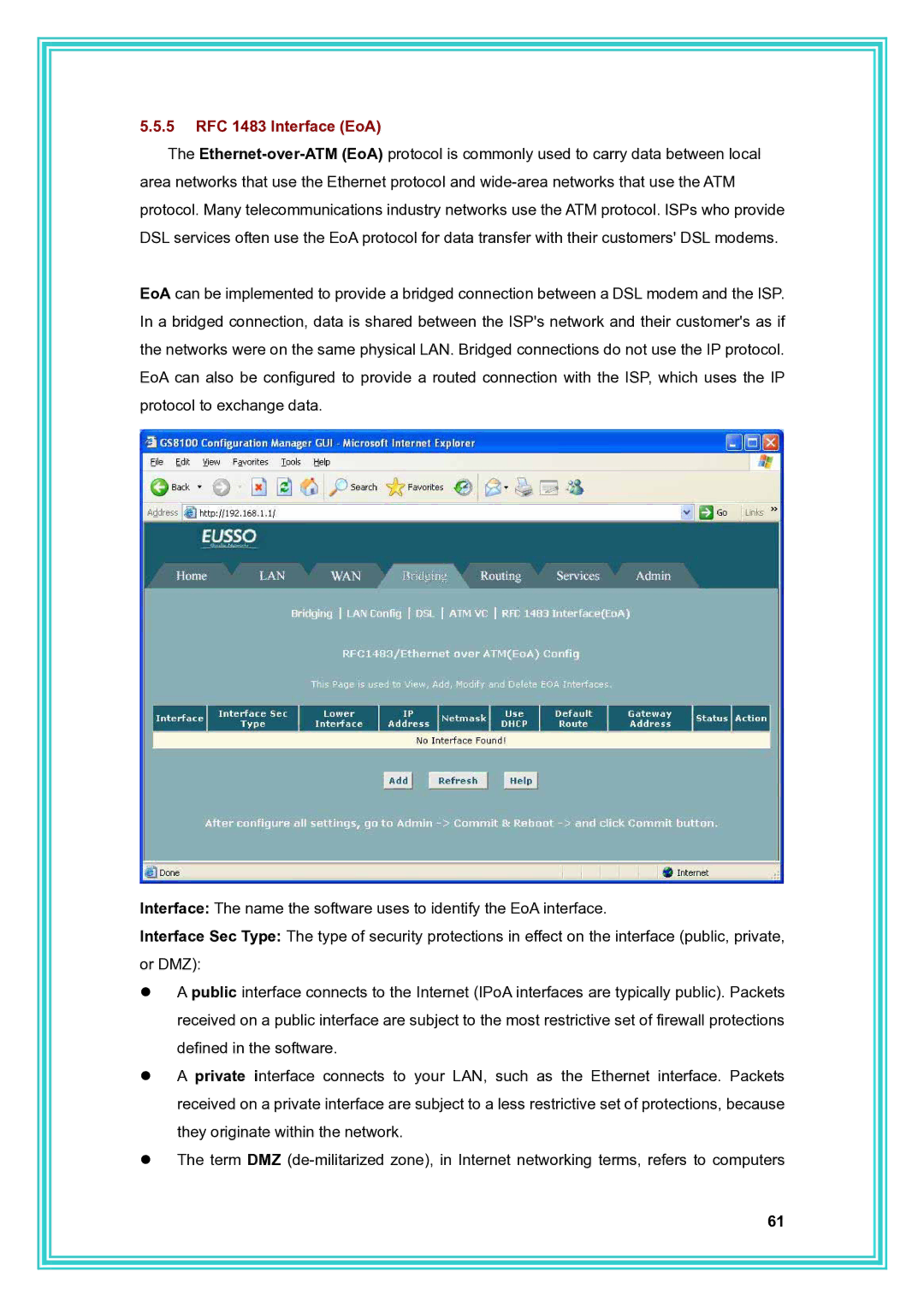
5.5.5RFC 1483 Interface (EoA)
The
EoA can be implemented to provide a bridged connection between a DSL modem and the ISP. In a bridged connection, data is shared between the ISP's network and their customer's as if the networks were on the same physical LAN. Bridged connections do not use the IP protocol. EoA can also be configured to provide a routed connection with the ISP, which uses the IP protocol to exchange data.
Interface: The name the software uses to identify the EoA interface.
Interface Sec Type: The type of security protections in effect on the interface (public, private, or DMZ):
zA public interface connects to the Internet (IPoA interfaces are typically public). Packets received on a public interface are subject to the most restrictive set of firewall protections defined in the software.
zA private interface connects to your LAN, such as the Ethernet interface. Packets received on a private interface are subject to a less restrictive set of protections, because they originate within the network.
zThe term DMZ
61
